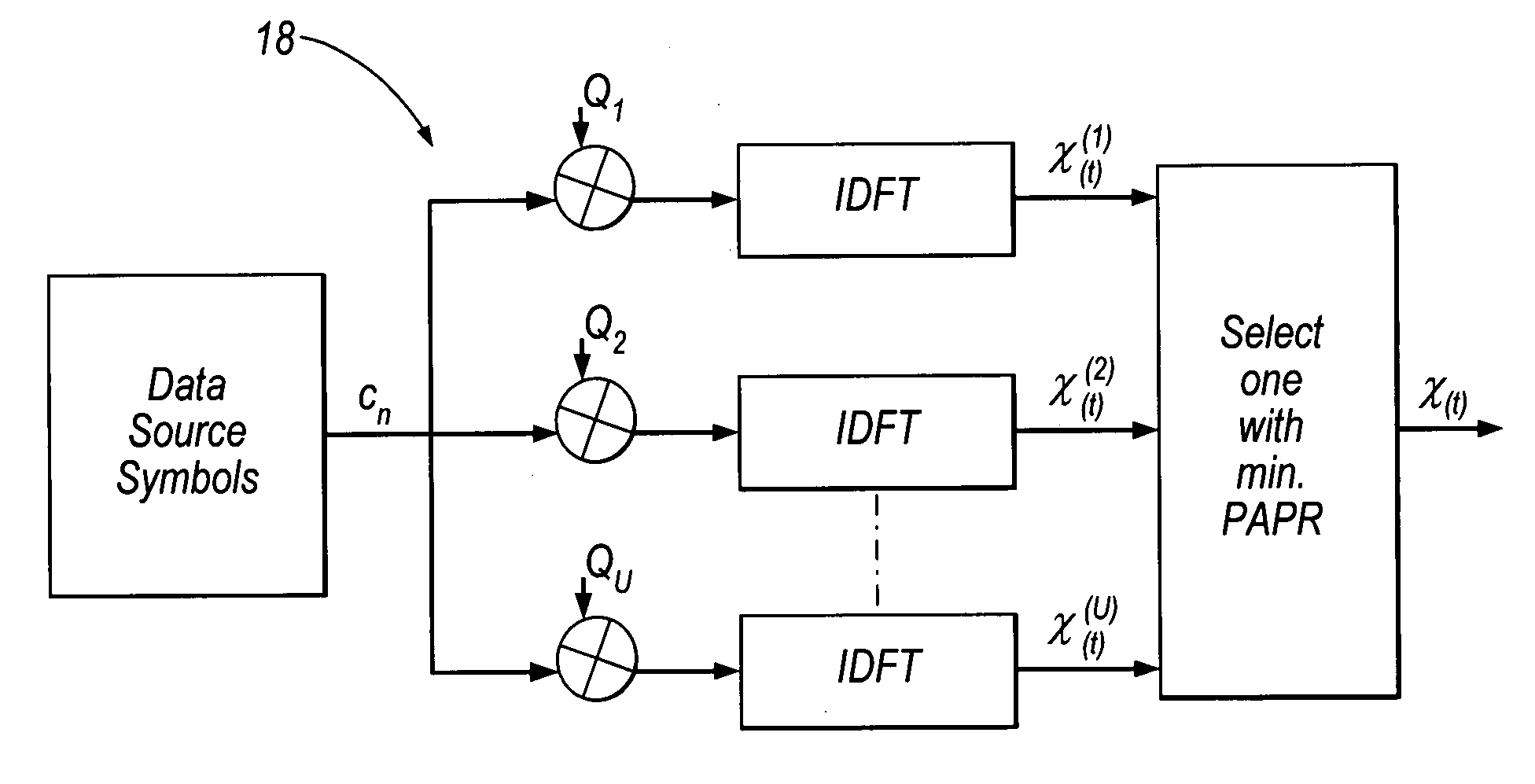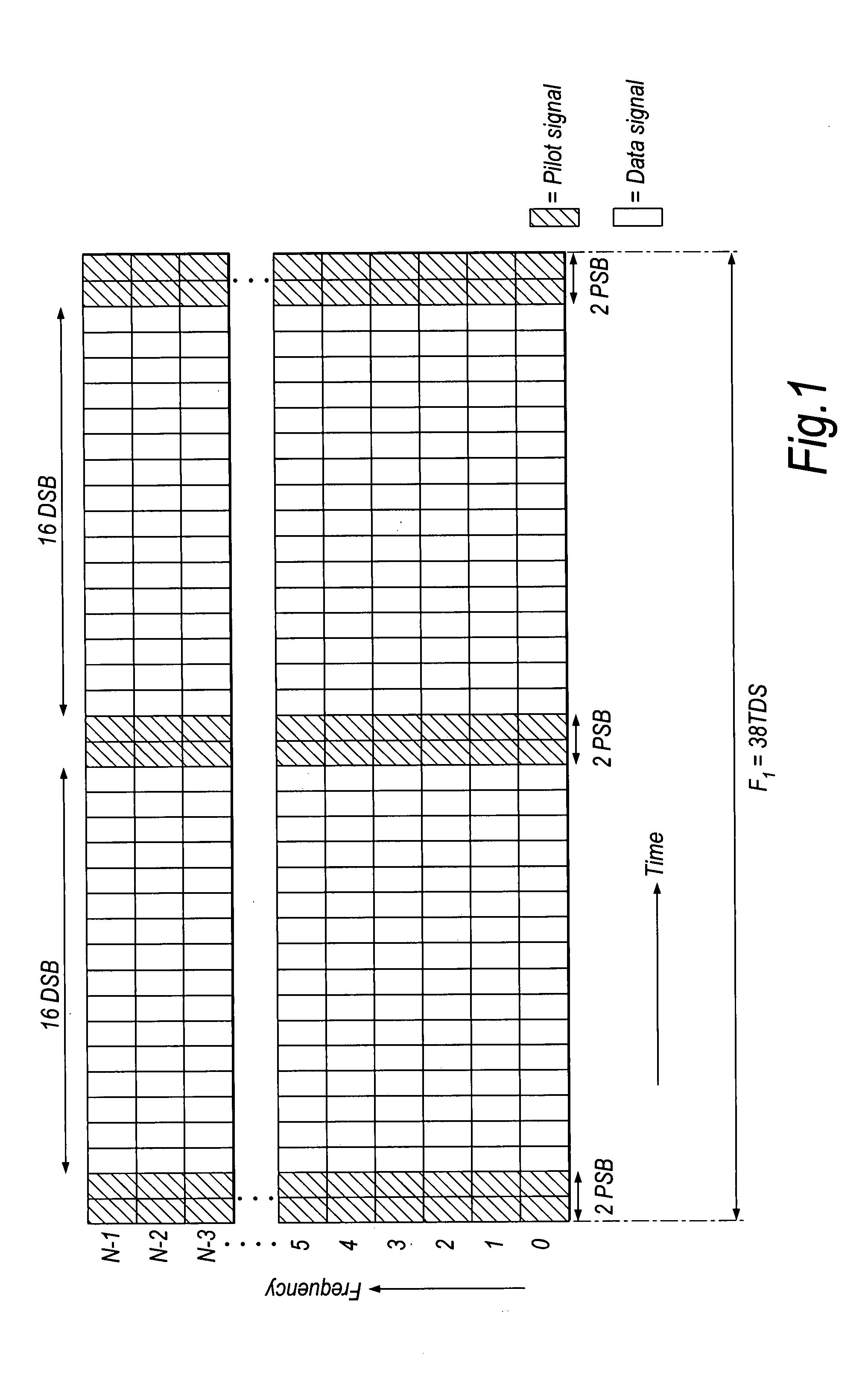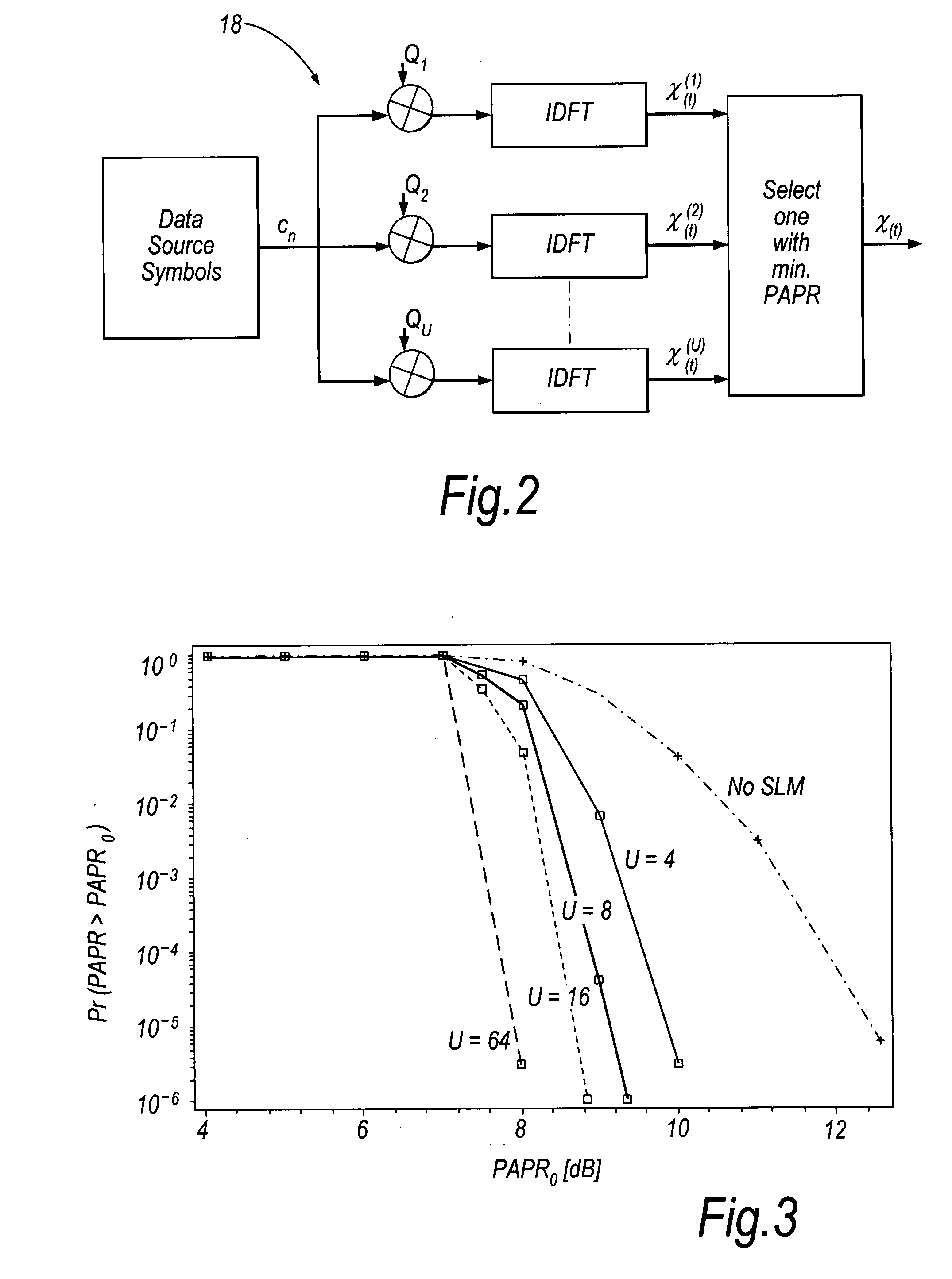Multi-carrier communication system
a communication system and carrier technology, applied in the field of multi-carrier communication systems, can solve the problems of significantly reducing the spectral efficiency of the system, non-linearity reducing the efficiency of the amplifier, and the requirement of guard band frequency, so as to increase the complexity of the receiver and the burden of signal processing
- Summary
- Abstract
- Description
- Claims
- Application Information
AI Technical Summary
Benefits of technology
Problems solved by technology
Method used
Image
Examples
first embodiment
[0056]FIG. 5 shows an example structure of an information unit of a multi-carrier signal comprising N sub-carriers according to the present invention. In this embodiment the pilot signals assigned to carry the phase information are all carried by signals comprised in the second time domain symbol (TDS2) of the information unit. The complete information unit is identical in structure to the information unit shown in FIG. 1 and FIG. 5 illustrates the way in which information about a phase vector Qu applied to a time domain symbol of the information unit may be provided to, or encoded in, the assigned pilot signals. Only the first two pilot signal blocks, PSB1 and PSB2, the first two data symbol blocks DSB1 and DSB2 and the last two data symbol blocks DSBNdata−1 and DSBNdata, comprised in the information unit F1 are illustrated in FIG. 5, where Ndata=32.
[0057] A phase vector, Qu, is applied to each of the data symbol blocks comprised in the information unit shown in FIG. 5. Preferably,...
second embodiment
[0063] Part of an information unit F2 according to the present invention is shown in FIG. 7. In this embodiment, the pilot signals assigned to a particular time domain symbol are carried by sub-carriers in the same time interval as the respective time domain symbol. Thus, TDS2, for example, is provided with a set of pilot signals P1. The pilot signals therefore appear to be arranged “within” the time domain symbol for which the pilot signals carry phase vector information. Thus, in a given time domain symbol (e.g. DSB1), a number of the sub-carriers, Npilot, are each modulated with the pilot signal whilst the remaining sub-carriers, N-Npilot, are modulated with data symbols. It can be seen from FIG. 7 that the pilot signals are scattered within the frequency domain of the time domain symbol. However, the positions of the Npilot sub-carriers within the frequency domain should be known, or determinable by, the receiver. It should be appreciated that the pattern, or arrangement, of the...
PUM
 Login to View More
Login to View More Abstract
Description
Claims
Application Information
 Login to View More
Login to View More - R&D
- Intellectual Property
- Life Sciences
- Materials
- Tech Scout
- Unparalleled Data Quality
- Higher Quality Content
- 60% Fewer Hallucinations
Browse by: Latest US Patents, China's latest patents, Technical Efficacy Thesaurus, Application Domain, Technology Topic, Popular Technical Reports.
© 2025 PatSnap. All rights reserved.Legal|Privacy policy|Modern Slavery Act Transparency Statement|Sitemap|About US| Contact US: help@patsnap.com



